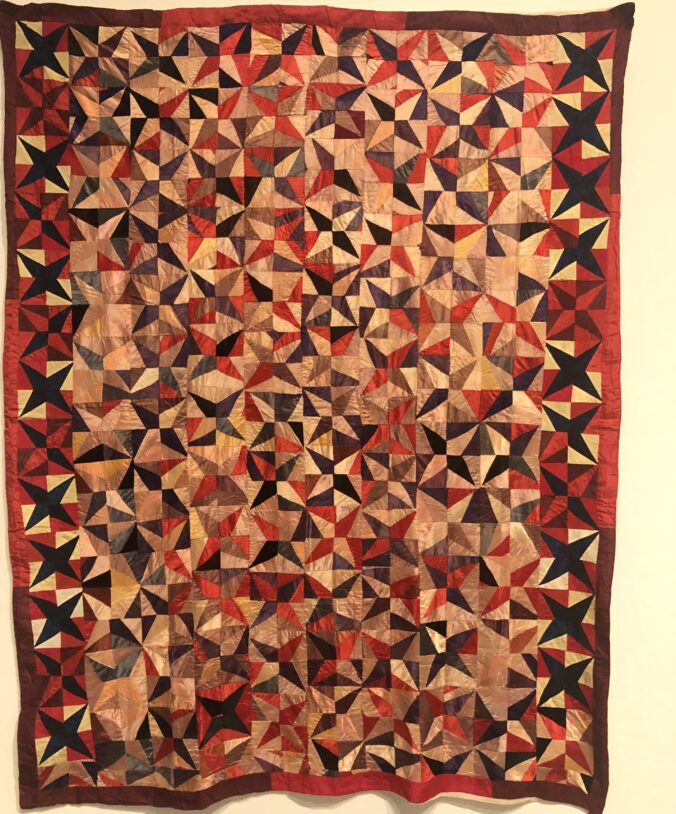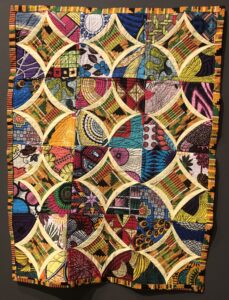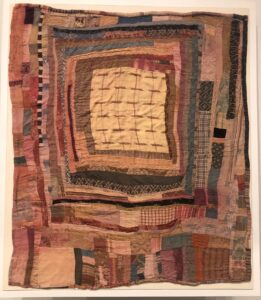One of the sweetest things about being in an urban setting is that I have greater access to museums and art exhibits than I did when I lived on a remote island. Recently, a new friend invited me to join him to see an exhibit of African American quilts at the Berkeley Art Museum, which is just a few miles from where we both live. The images of the quilts have stayed with me, I think, for several reasons.
First, this is what I think of as “everyday art”—art that people create and use as a part of their lives. These quilts were made from materials that people had on hand—mainly, scraps of fabric from their family’s clothing—and the finished artwork wasn’t to be framed or hung on a wall; it was given to loved ones; it went on their beds; it kept them warm at night.
One of the quilts I remember most clearly was supremely simple. It was made entirely from blue denim work clothes. Is this art? I would say so. That blue denim quilt moved me deeply. It was a graphic expression of a person’s life. I didn’t photograph that one, but I think I will never forget it.
I was also moved by the explanation of her quilting that came from Laverne Brackens, who said:
“In my family at first quiltmaking meant warmth and love. You know these cold nights you put a quilt on and you be so warm and you have a feeling that the person who made that quilt loves you. And when they make one so beautiful that you don’t want to turn loose from it, that is precious. I have fifty-six children, grandchildren, great grandchildren, and great great grandchildren, and I made everyone a quilt.”
Ms. Brackens is ninety-seven years old; in 2011 she received a National Foundation for the Arts Heritage Fellow Award for lifetime contributions to the art of quilting.
There were eighty artists whose work was represented in the museum exhibit, and the open and improvisational style of most of these quilters radiated through their artwork.
“I feel a little uncomfortable about this exhibit,” my friend said after we’d looked at a number of the quilts. “It’s like looking at Native American art in a big Western museum. It’s as if the art was appropriated for the benefit of another culture—the dominant culture. Notice that these quilts are being displayed in a way that’s different from the way they were once used.”
I thought about that for a few minutes, and then I decided to disagree. I like the fact that a museum is recognizing the beauty and value of this home-grown, home-used, home-needed art form. I like the fact that the artists are being given recognition and that their words—their own descriptions of their art—are being mounted on the wall along with their quilts.
I like art exhibits that inspire ordinary people to create art in their own lives—art for warmth and for love.
The Berkeley Art Museum and Pacific Film Archive’s exhibit—Routed West: Twentieth Century African American Quilts in California—will be open through November 30, 2025.




Hi Mahananda, this is Alka Jain from Montreal. Just wanted to say hello and to let you know how much I enjoy reading your articles. Glad to know that you have settled into your new home. I am in awe of your ability to share so many aspects of your life in such a candid manner. I remember our little conversations in SMA, and am sending you lots of love and good wishes.